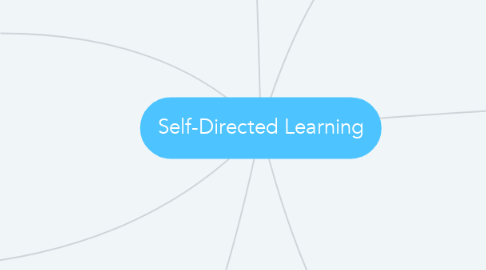Self-Directed Learning
by Abrar A

1. Steps (Knowle’s model)
1.1. 1. Diagnose learning needs
1.2. 2. Formulate learning goals
1.3. 3. Identify human and material resources for learning
1.4. 4. Choose and implement appropriate learning strategies
1.5. 5. Evaluate learning outcomes
2. Rationale
2.1. Proactive learning
2.2. it fits with our instinct of being responsible
2.3. learners are heterogeneous
2.4. acquisition of skills
3. Principles
3.1. Students learn on their own or in group
3.2. Have control over own learning
3.3. Encouraged to develop their own personal plan
3.4. Different needs of individual students
3.5. resources and study guides
3.6. Teacher’s role changed from lecturer to manager of learning process
4. Barriers
4.1. Lack of motivation
4.2. Lack of confidence
4.3. Lack learning needs
4.4. Lack of self-evaluation
4.5. Lack of interest
4.6. Lack of resources
4.7. Inability to manage time
5. Definitions
5.1. Self-Directed Learning ( self-control and responsibility)
5.2. Resource-Based Learning ( using resources )
5.3. Independent Learning ( students work on their own to meet their own goals)
6. Uses
6.1. Problem-Based Learning
6.2. Distance Learning
6.3. Private Learning
6.4. Research projects
7. Advantages
7.1. Convenience
7.2. Relevance to the needs
7.3. Individualization
7.4. Competence
7.5. interest and motivation
7.6. Development of skills


